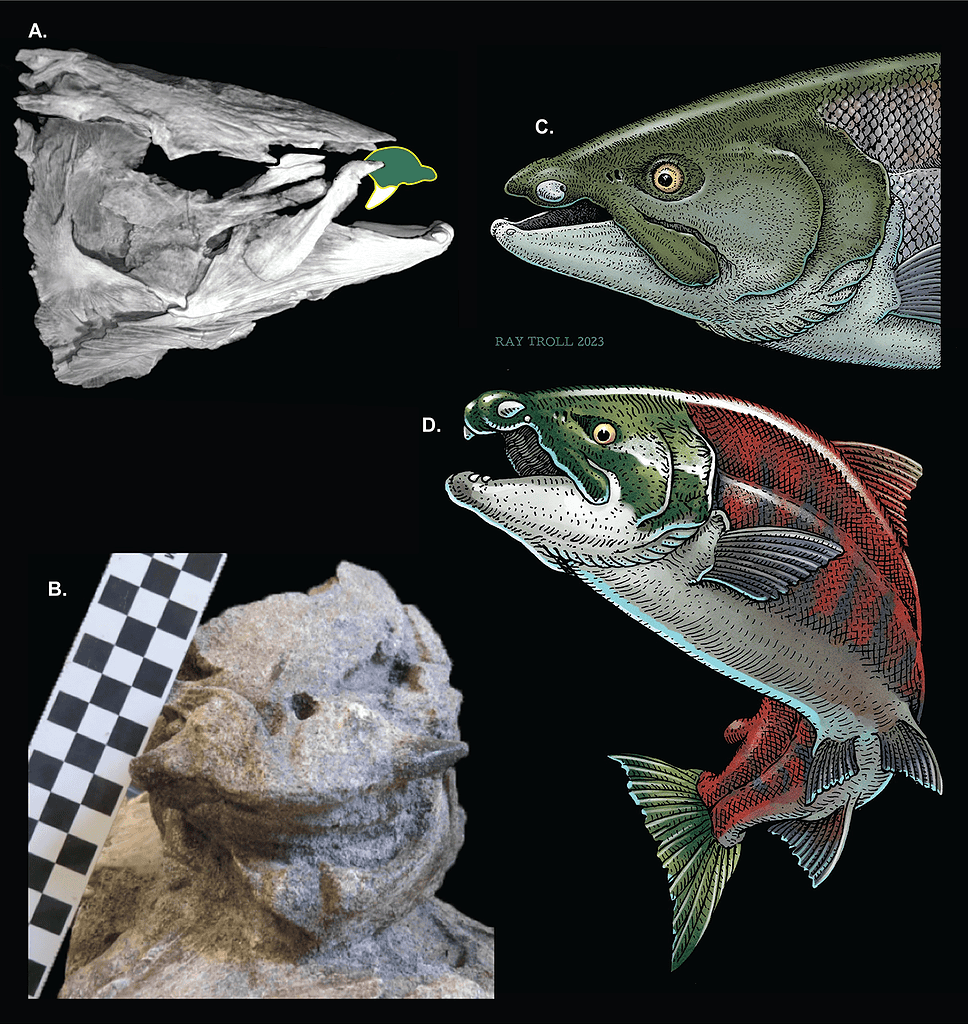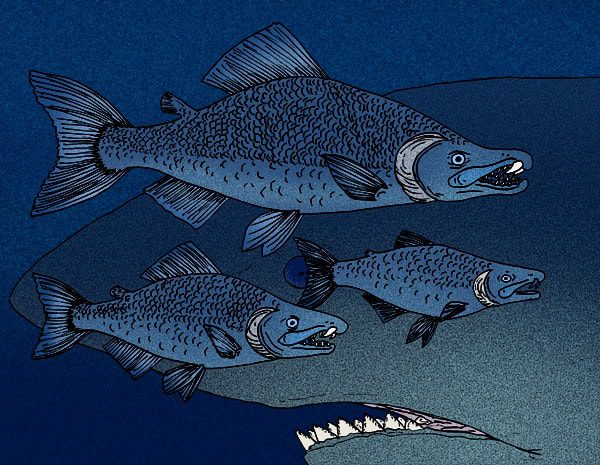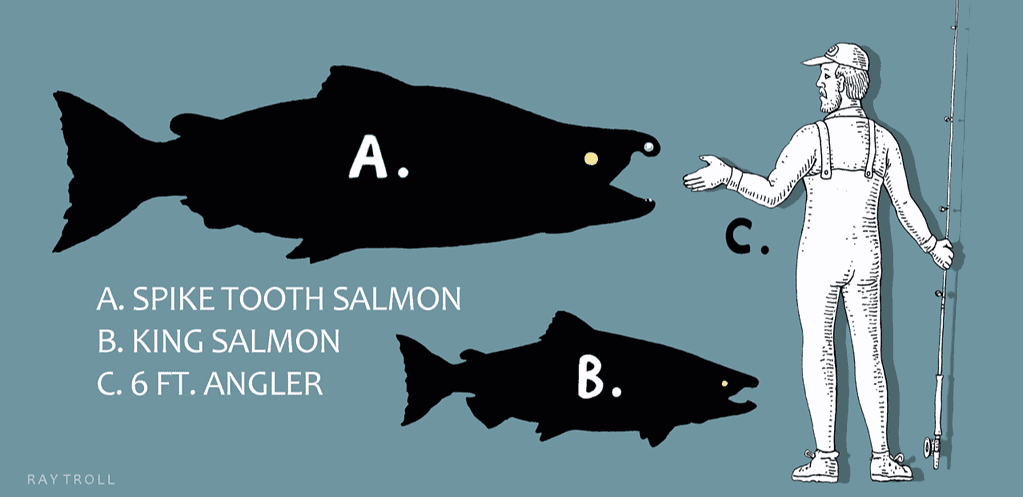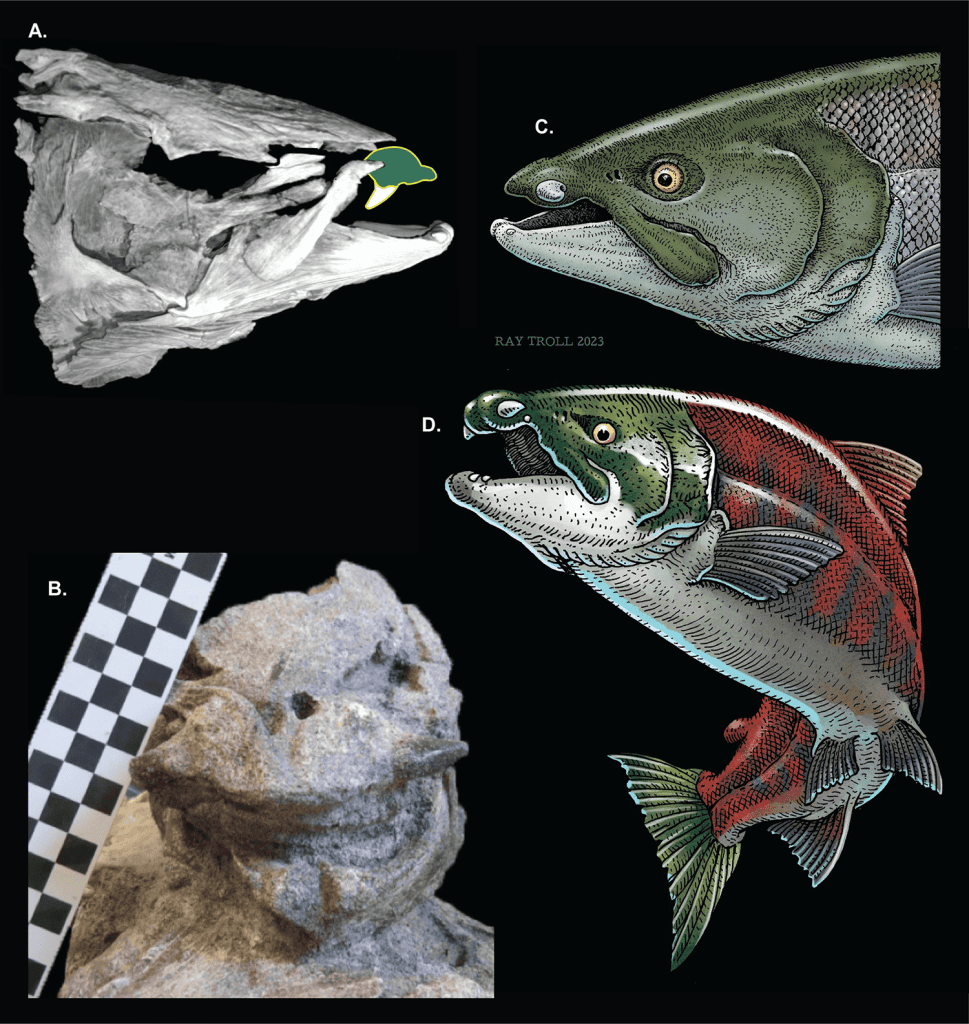The earliest remains of Oncorhynchus rastrosus are about 12 million years old, along the California coast. This fish lived along the Pacific shores of North America and Japan, reaching sizes of up to 2.4 meters (7 ft 10 in) and weighing 200 kg (440 lb).
Previous research on the fossils revealed that the Pacific salmon had unusual, tusk-like teeth. Now, a new analysis suggests they were pointed sideways — and probably used for combat.

Not a saber-toothed salmon
Salmon are quite fascinating creatures. They’re strong swimmers that travel thousands of miles, and they grow to pretty impressive sizes. But none were as large as O. rastrosus.
This enormous species was the biggest salmon to ever exist (as far as we know, at least). From the very first fossils, it was clear that it had some oversized teeth. Initially, researchers thought these teeth pointed backwards, like fangs. They assumed this because the fangs were found disassociated from the rest of the skull, which is more likely to be the case if they face inwards. This would have made the salmon a “saber-toothed salmon”, similar to the famous “saber-toothed cat.”

In the new study, researchers performed Computed Tomography (CT) scans to get a new view of these fossils. CT is a non-invasive imaging technique that enables researchers to visualize structures not visible to the naked eye, without damaging the fossil.
CT scans can reveal the most minute details of an organism’s anatomy, including tiny bones, soft tissues, and even remnants of last meals providing unprecedented insight into the biology, behavior, and evolution of extinct species. In this case, the CT scan showed that the teeth actually pointed sideways, much like a warthog. So, it’s not a “saber-toothed salmon”, it’s a “spike-toothed salmon”, researchers say.
Feisty salmon

It’s not entirely clear what the teeth were for, although they were probably not used for peaceful purposes or display. Researchers suspect they would have been used for fighting, either amongst themselves or against other species.
“We have known for decades that these extinct salmon from Central Oregon were the largest to ever live. Discoveries like ours show they probably weren’t gentle giants. These massive spikes at the tip of their snouts would have been useful to defend against predators, compete against other salmon, and ultimately build the nests where they would incubate their eggs,” says Kerin Claeson, lead author and professor of anatomy at Philadelphia College of Osteopathic Medicine.
The team believes that the teeth were not used for showing off because both males and females had them, so they must have had a practical purpose.
“We also want to emphasize that both females and males had the huge, tusk-like teeth. So, both sexes were equally frightening,” says Brian Sidlauskas, a professor in the Department of Fisheries, Wildlife, and Conservation Sciences at Oregon State University.
The teeth could still have been used as a tool, perhaps for digging out nests. But one thing that's clear is that they were not used for hunting. This giant salmon was a filter feeder that ate plankton, according to the team.
This new research highlights the importance of constantly reassessing our assumptions in the scientific story. The discovery that this enormous salmon used its spike-like teeth sideways opens up new possibilities for understanding the ecological dynamics of ancient marine environments.
Claeson KM, Sidlauskas BL, Troll R, Prescott ZM, Davis EB (2024) From sabers to spikes: A newfangled reconstruction of the ancient, giant, sexually dimorphic Pacific salmon, †Oncorhynchus rastrosus (SALMONINAE: SALMONINI). PLoS ONE 19(4): e0300252. https://doi.org/10.1371/journal.pone.0300252









